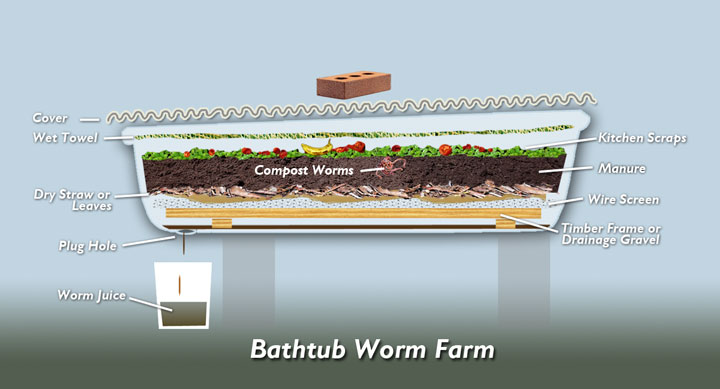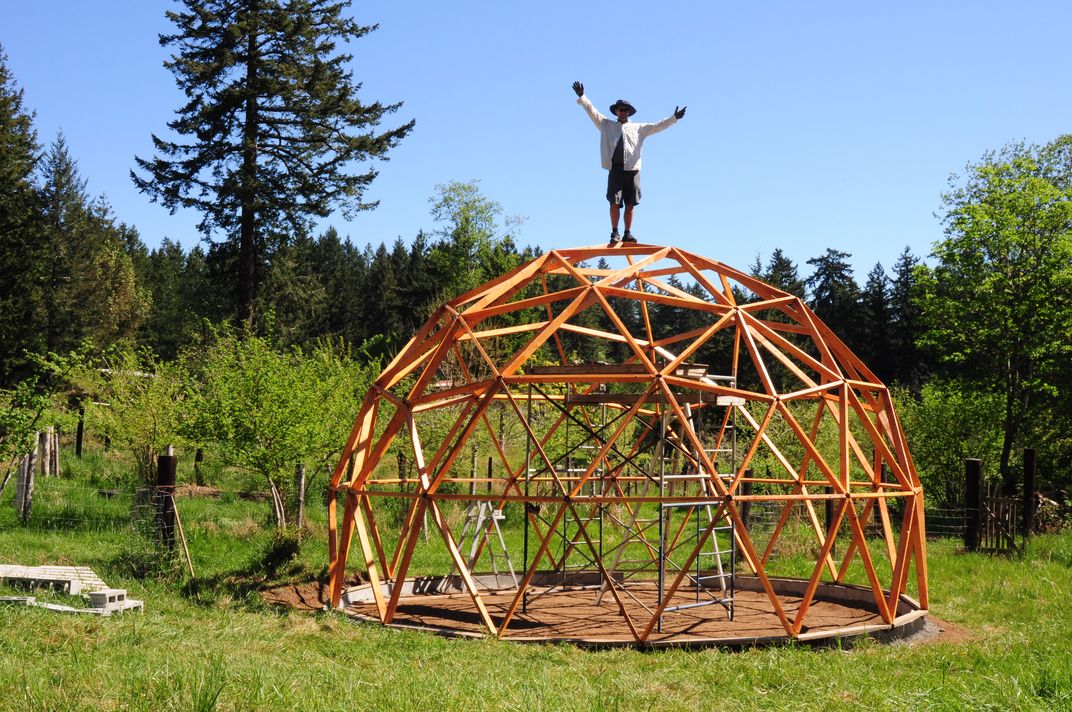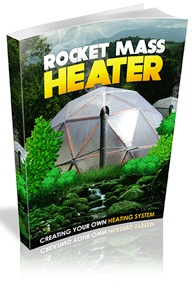Biodome Greenhouse Vermiculture (Worm Composting!)
Vermiculture: Worm Farming In The Biodome
A basic tenet of Permaculture is that the waste product from one activity can always become a valuable resource for another activity. A true Eden would be a biodome greenhouse that is a self-contained integrated productive ecosystem with minimal external energy demands. Vermiculture, the fancy name for worm farming, is a great fit with this type of sustainable ecosystem.

In the right conditions, European Red Wiggler worms can eat their own weight daily in organic compost (a mix of nitrogen-rich and carbon-rich plant matter). The resulting nutrient rich worm “castings” can be harvested two to four times a year.

The Biodome is a great place to make sure worms stay happy and active through the colder season. In a good-sized compost bin or worm box, there should be enough organic material to keep the worms insulated in cooler weather. In the summer, it is important to make sure the worm bin is kept shaded and moist to keep the worms cool enough. While they can survive between 10 °C (50 °F) and 30 °C (86 °F), just like us, worms eat most actively around 15–25 °C (59-77 °F). Red Wrigglers like a warm moist environment. Too much thermophilic composting (think piles of hot grass clippings) will kill them, as will a hard freeze with insufficient insulation.
While the worms themselves can be raised for bait, or as feed for other animals, the most valuable service they provide is turning left-over plants material and kitchen scraps into excellent fertilizer. Worm manure is high in microbial activity, improves soil aeration, water and nutrient retention, and contains many bio-available nutrients. In other words, it is ideal plant food.
Your worm bin should have a drain to collect the “compost tea” liquid fertilizer that will collect at the bottom. Alternate layers of carbon-rich bedding material (dry leaves, shredded paper with vegetable-based ink only, hardwood sawdust, hay or straw) with layers of nitrogen rich food (kitchen scraps, weeds, most plant trimmings, grass clippings). Remember, worms need oxygen too, so make sure there’s sufficient roughage to leave plenty of air-gaps. Always finish with a layer of carbon-rich bedding and moisten with a sprinkling of water, from rinsing the compost bucket, for instance.
By keeping the compost worm bin inside your Biodome Greenhouse, the worms will stay active throughout the year, and the bin doesn’t need to be so securely sealed. Outdoor insecure compost bins tend to attract rats, crows, possums, raccoons, ravens and bears (depending on your location). Besides worms, most compost bins develop an entire ecosystem of beneficial decomposition organisms and their predators. Slugs, earwigs, millipedes and wood-bugs can become pests on garden crops, but in the compost they join the worms in converting rotting plant material to gardening gold.

“Worm Juice” is concentrated type of biological “compost tea” sells for $40.00 a gallon!
Worm Juice is a by-product of nature in liquid form, Worm Juice is rich in good nitrogen fixing bacteria, and the key is the 100,000CFU/ml bacteria plus ready available liquid minerals and trace elements for immediate plant uptake.
Also remember you can make money with your worm farm! A very small operation could easily pay for light and power for your biodome greenhouse all year round. In fact some folks are making a good side income just off live worm, worm juice and casting sales.
After six months, 12lbs of worms can produce over 300lbs of vermicompost/month. Assuming a farm gate selling price of $2/lb, a monthly revenue of $600 totally achievable. Less monthly expenses of $50, monthly net income reaches $550.00 not counting labor but also not counting worm juice sales. This means a yearly net return of $6,600.00 from an investment of under $400 or a 1650% return on your investment! Worms double every six months with a corresponding doubling of the vermicompost business. So stay small as a side business or go big and create biodome greenhouses all over your property pumping out “black and red gold”.










